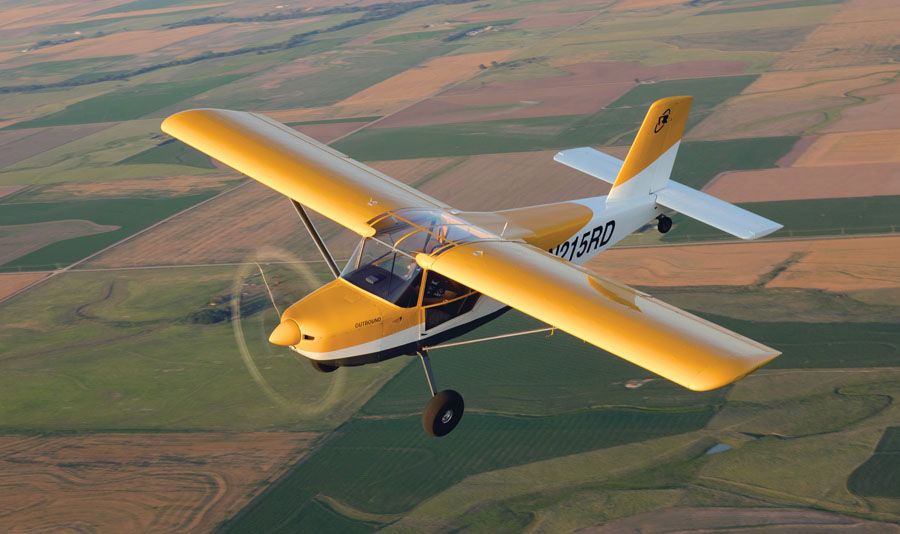If you are considering building a new homebuilt aircraft from a kit — or are thinking of buying someone’s completed homebuilt—this series maybe the most valuable hobby-related information you will ever read. That is because the hobby of building and flying your own full-size aircraft is likely to be a highlight of your life. Thousands of builder/pilots report that the process ranges from exhilarating to daunting, and at times from exciting to discouraging. But those who finish and fly their own aircraft know a satisfaction impossible to describe in words.
The commitment of time, money and work space dictates a dedication seen in few hobbies. Yet if the only goal is ownership of a custom aircraft, building will be drudgery and the chance of completion is reduced. Most homebuilders, however, know before they begin that they like building things, and others discover it early in the process. For most, working with their hands on a fascinating project is at least half of the fun. And some find to their amazement that they like building even more than they like flying. Members of this group find themselves flying the new creation for a while, then selling it to finance another build-it-yourself aircraft.
Our objective in this series, however, is to tackle some of the issues that should be addressed before investing serious time or money. Here is the list of topics:
- Deciding whether to build
- How to pick a design
- Choosing the right kit company
- Getting help and keeping it legal
- Licensing the aircraft
- Flight testing
- Getting insurance
- Liability and selling a completed aircraft
- Staying married
Licensing the Aircraft
In the U.S. non-military aircraft other than ultralights are licensed by the FAA according to AC 20-27.
- N numbers. Obtaining a registration number is the first step in licensing a homebuilt. Reserving an N number (identifying the aircraft as registered in the U.S.) requires going to: http://registry.faa.gov/aircraft.asp#SpecialNNumber or contacting FAA , Aircraft Registration Branch, AFS-750 , PO Box 25504, Oklahoma City, OK 73125. Phone (405) 954-4206. Random Nnumber registration is free. A small fee is required for a special registration, and you may prioritize a list of several N-number preferences.
- Registration comes next and is handled by the same agency on FAA form 8130-6 to: FAA Aircraft Registration, AFS-750 , PO Box 25504 Oklahoma City, OK 73125. Phone:(405) 954-3116 or visit: http://registry.faa.gov/aircraft. asp#RegisterAircraft.
- For amateur-built aircraft, the registration form must be accompanied by a notarized copy of FAA Form 8130-12, which is the affidavit by the owner that the major portion of the aircraft has been built by amateurs. FAA sends a temporary registration certificate that must be attached to the new homebuilt before the FAA official inspection. States that assess property tax or otherwise extract money from aircraft owners subscribe to the FAA aircraft registration list. Therefore, homebuilders are well advised to avoid registering the aircraft more than a few months before completion and inspection are anticipated. Early registration may result in being taxed for the value of a completed aircraft when the builder is still facing a pile of parts.
- Documentation. For a number of reasons, builders keep logs and other records of work on their aircraft. Someone should take pictures of the builder working on the aircraft in various phases, and a diary of the amount and type of work should be written at the end of each work day. The FAA inspector will want to see the work log and the photos, which constitute the major evidence that the aircraft was actually built by amateurs. The documents should be stored in a safe place, as they may be needed years later.
- Final inspection. The official priorto-flight inspection will be conducted by an FAA airworthiness inspector (who does not charge) or an FAA-designated airworthiness representative (DAR), who charges for the service. A list of DARs is available from the local FAA Flight Standards District Office. DARs are usually available on much shorter notice than FAA inspectors and will check workmanship, FAA paperwork, builder’s documentation, and weight and balance. A satisfactory inspection will result in issuance of a temporary certificate of airworthiness with area and possibly other limitation. Normally, 40 hours of test flying is assigned unless the aircraft uses a certified engine/propeller combination. In that case, 25 hours of testing is often specified.
To read more about licensing your aircraft, head to Kitplanes.



































